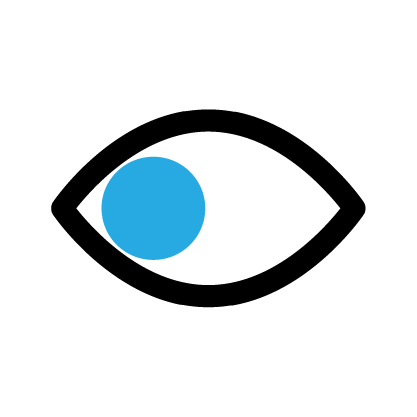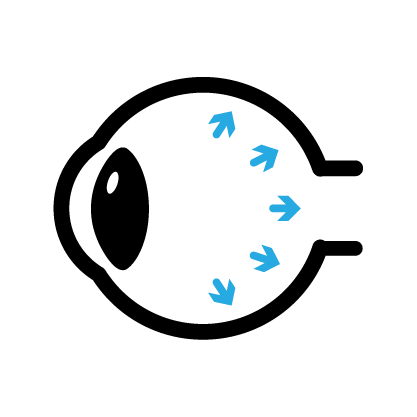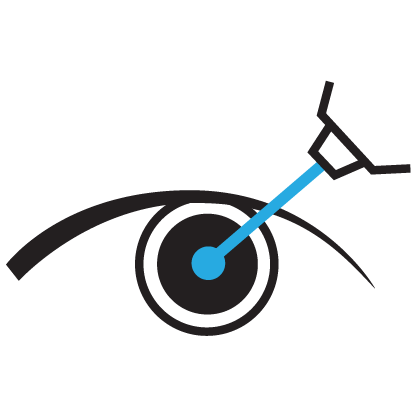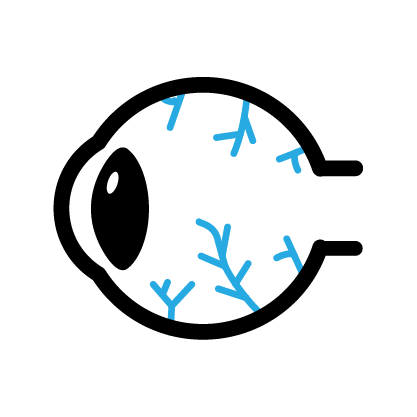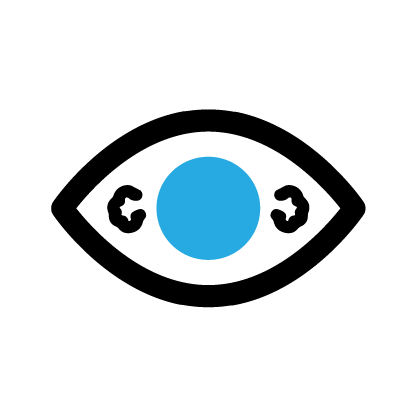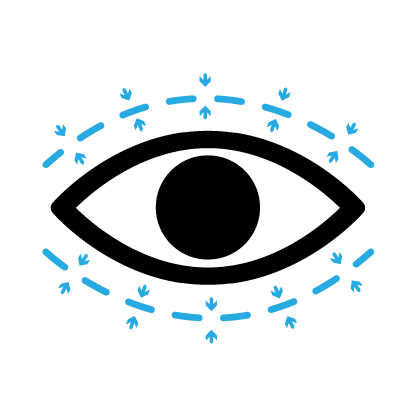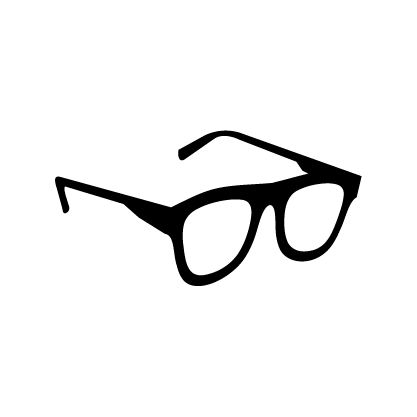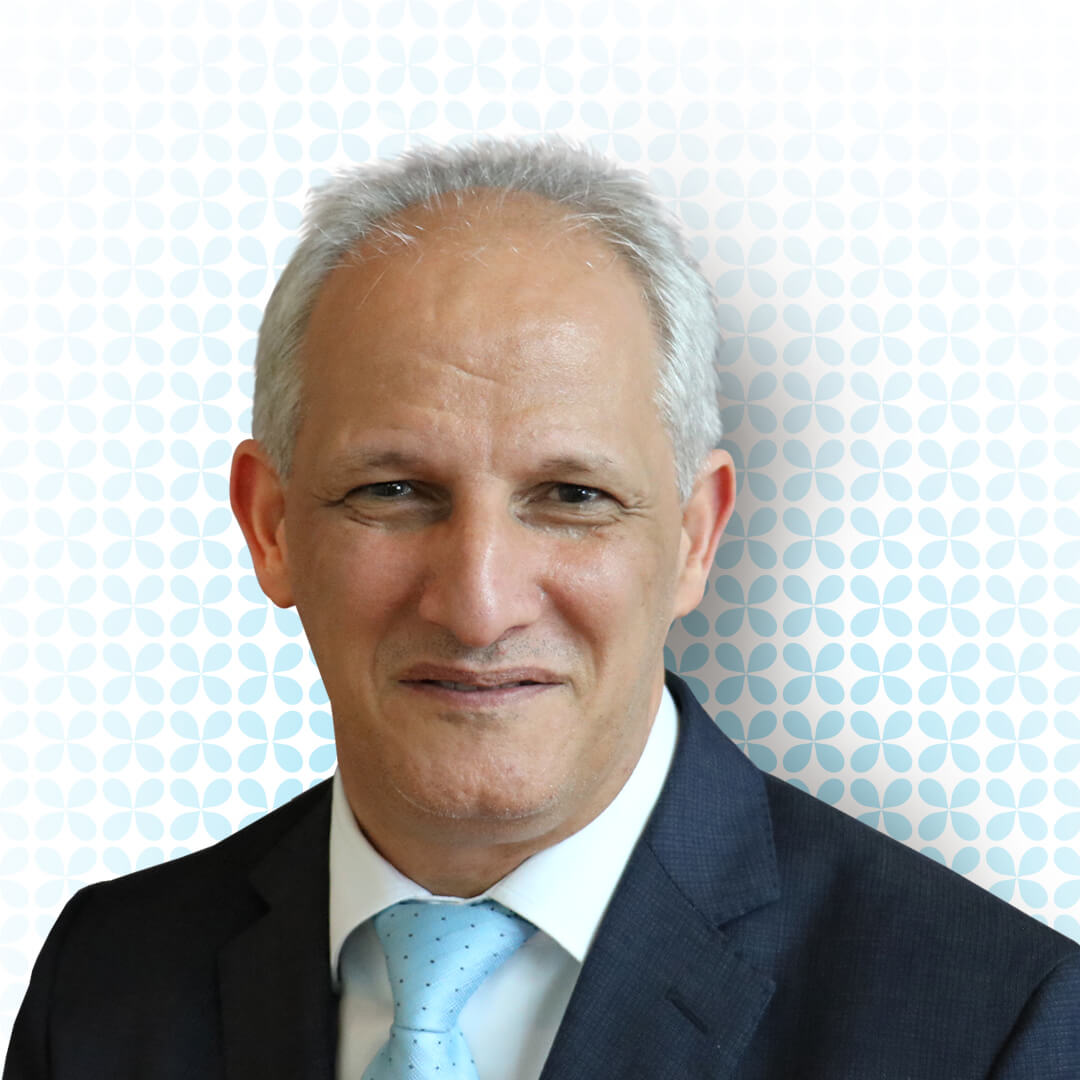About Cornea
The cornea, known as the clear window at the front of the eye, plays a vital role in vision. It provides two-thirds of the eye’s focusing power and is crucial for maintaining a clear and sharp image. However, the cornea can be affected by various conditions, including inflammatory diseases, infections, and shape disorders.
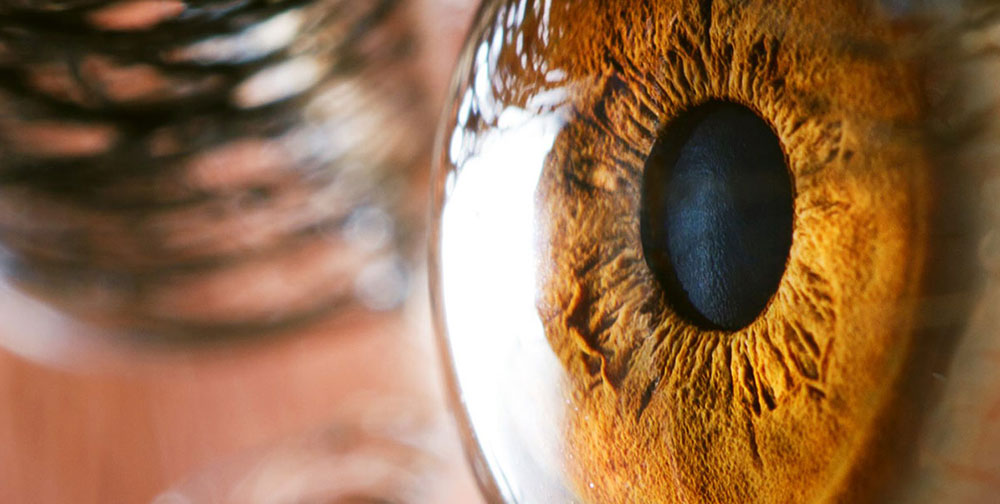
Conditions affecting the cornea
Some commonly seen corneal conditions include:
- Keratitis: inflammation of the cornea.
- Corneal abrasion: a scratch on the cornea occurring due to trauma or weakness of the epithelium (the outermost skin of the cornea)
- Corneal foreign body: a piece of debris embedding itself superficially on the surface of the cornea.
- Corneal laceration: a partial or full-thickness wound of the cornea as a result of trauma.
- Keratoconus: a condition causing thinning and distortion of the cornea
- Corneal scarring: a grey-white mark left behind as a result of trauma or previous inflammation of the cornea.
- Fuchs endothelial dystrophy: a corneal condition where the cornea becomes waterlogged as a result of poorly functioning endothelial cells.
- Corneal dystrophies: inherited conditions causing gradual opacification of the cornea as a result of the metabolic by-products.
At Moorfields Eye Hospitals UAE, our cornea specialists in Dubai and Abu Dhabi have extensive subspecialty training in diagnosing, managing and treating a wide range of corneal conditions, to ensure optimal eye health and vision for our patients.
Comprehensive Assessments
We offer a comprehensive range of eye care assessments, diagnostics, surgical and non-surgical treatment services. Assessment services: (evaluation examinations may differ depending on outcome of consultation) (expandable links below)
- General Health Assessment
- Optometry assessment
- Pentacam
- Consultation with Cornea and Laser Refractive Consultant
- General Health Assessment
- Optometry assessment
- Pentacam
- Cell count
- Consultation with Retina Consultant
Conditions & Treatment
Corneal Cross-Linking
About Corneal Cross-Linking
Corneal cross-linking (CXL) is a treatment for patients with keratoconus which can prevent their condition getting worse. CXL is successful in preventing the condition deteriorating in more than 90% of cases. Keratoconus worsens as the cornea weakens. CXL uses ultraviolet light and vitamin B2 (riboflavin) drops to harden the cornea. Together, they cause fibers within the cornea to cross-link – or bond more firmly. This treatment emulates the normal age-related hardening of the cornea, which is known as natural cross-linkingCorneal Cross-Linking
About Corneal Cross-Linking
Corneal cross-linking (CXL) is a treatment for patients with keratoconus which can prevent their condition getting worse. CXL is successful in preventing the condition deteriorating in more than 90% of cases. Keratoconus worsens as the cornea weakens. CXL uses ultraviolet light and vitamin B2 (riboflavin) drops to harden the cornea. Together, they cause fibers within the cornea to cross-link – or bond more firmly. This treatment emulates the normal age-related hardening of the cornea, which is known as natural cross-linkingCorneal Transplant
About Corneal Transplant
The cornea is a window of transparent tissue at the front of the eyeball. It allows light to pass into the eye and provides focus so that images can be seen clearly. Various diseases or injuries can make the cornea either cloudy or change shape. This prevents the normal passage of light into the eye and affects vision.The cornea has three main layers (thin outer and inner layers and a thick middle layer). In some diseases, only the inside layer (endothelium) is affected, causing corneal oedema (swelling) and clouding.
Corneal Transplant
About Corneal Transplant
The cornea is a window of transparent tissue at the front of the eyeball. It allows light to pass into the eye and provides focus so that images can be seen clearly. Various diseases or injuries can make the cornea either cloudy or change shape. This prevents the normal passage of light into the eye and affects vision.The cornea has three main layers (thin outer and inner layers and a thick middle layer). In some diseases, only the inside layer (endothelium) is affected, causing corneal oedema (swelling) and clouding.
Keratoconus treatment
What is Keratoconus?
Keratoconus is a progressive eye condition in which the normally round cornea becomes thin and begins to bulge into a cone-like shape. This distortion causes blurry or distorted vision and can significantly affect a person's ability to see clearly. The condition often develops during adolescence and may progress more quickly if it begins at a younger age or if there is frequent eye rubbing. At Moorfields Eye Hospital Dubai and Abu Dhabi, our Keratoconus specialists use advanced diagnostic tools and personalised keratoconus treatment options for individuals, supporting long-term eye health and helping patients maintain the best possible vision.Keratoconus treatment
What is Keratoconus?
Keratoconus is a progressive eye condition in which the normally round cornea becomes thin and begins to bulge into a cone-like shape. This distortion causes blurry or distorted vision and can significantly affect a person's ability to see clearly. The condition often develops during adolescence and may progress more quickly if it begins at a younger age or if there is frequent eye rubbing. At Moorfields Eye Hospital Dubai and Abu Dhabi, our Keratoconus specialists use advanced diagnostic tools and personalised keratoconus treatment options for individuals, supporting long-term eye health and helping patients maintain the best possible vision.Meibomian Gland Dysfunction
What is Meibomian Gland Dysfunction?
Meibomian Gland Dysfunction (MGD), also known as meibomian gland disease, is a common condition in which the oil-producing glands in the eyelids become blocked or do not function properly. These glands are essential in maintaining a healthy tear film, which keeps the surface of the eye moist and comfortable. When the glands are not functioning correctly, the tear film becomes unstable and evaporates too quickly. This can lead to dry, irritated, or uncomfortable eyes. This condition is particularly common in older adults, but it can also affect individuals of any age. At Moorfields Eye Hospital Dubai and Abu Dhabi, we offer advanced diagnostic tools and evidence-based treatment options to help manage Meibomian Gland Dysfunction and improve your long-term eye comfort and visionMeibomian Gland Dysfunction
What is Meibomian Gland Dysfunction?
Meibomian Gland Dysfunction (MGD), also known as meibomian gland disease, is a common condition in which the oil-producing glands in the eyelids become blocked or do not function properly. These glands are essential in maintaining a healthy tear film, which keeps the surface of the eye moist and comfortable. When the glands are not functioning correctly, the tear film becomes unstable and evaporates too quickly. This can lead to dry, irritated, or uncomfortable eyes. This condition is particularly common in older adults, but it can also affect individuals of any age. At Moorfields Eye Hospital Dubai and Abu Dhabi, we offer advanced diagnostic tools and evidence-based treatment options to help manage Meibomian Gland Dysfunction and improve your long-term eye comfort and visionRequest an Appointment

